The Magic School Bus Blasts Into Space
分級讀本/橋梁書 | Scholastic Reader
The Magic School Bus Blasts Into Space
480L
書籍資訊
| 適讀年齡 | 5 - 8 |
| 適合年級 | K - 2 |
| 字數 | 1,353 字 |
| Grade level equivalent | |
| AR level | 2.4 |
| F&p/guided reading level | |
| Lexile | 480L |
| DRA level | |
| 出版社 | Scholastic |
| 出版日期 | July 2009 |
Unusual book
其他您可能會有興趣的書籍
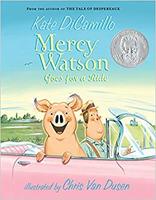
Mercy Watson Goes For A Ride
每個星期六,Watson先生都會開車載Mercy去兜風。在一次兜風時,鄰居老奶奶Baby突然出現在後座上,Watson先生嚇了一大跳,一直想開車的Mercy趁這個時候坐到Watson先生的膝蓋上並控制了方向盤,雖然警察Tomilello要求他們開到路邊停下來,但腳麻了的Watson先生沒辦法踩剎車… *<span style="color:#EA7066">紐伯瑞兒童文學獎得主作品!</span> *此系列6本由於人物出現有次序性,建議按順序閱讀。

Special Gifts
Nine-year-old cousins Rosie, Lily, and Tess spend their winter vacation learning to sew with their neighbor Mrs. White and preparing for a special winter solstice dinner with Aunt Lucy and her boyfriend Michael.
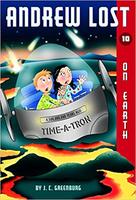
Andrew Lost on Earth
Andrew, Judy, and Thudd have escaped the Big Bang only to find themselves trapped inside the Earth as it forms all around them! Meanwhile Uncle Al is stranded in the Ice Age. Somehow Andrew, Judy, and Thudd must fix their time machine and rescue Uncle Albefore he becomes dinner for a sabertooth tiger! Kids, parents, and teachers love this serieskids for all its gooey grossness, and teachers and parents for all the fun science and great discussion points!Andrew Lost books are gross and disgusting. Thats why we like them.The Washington PostOne cliff-hanger after another.School Library JournalAt the end of each book are additional pages of interesting facts . . . even when the stories end, the learning never stops.Kidsreads.com
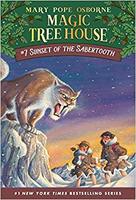
Sunset Of The Sabertooth (MTH #7)
This time, the Magic Tree House whisks Jack and Annie all the way back to the Ice Age, where they meet woolly mammoths, cave people and fierce sabertooth tigers!

Jesse Owens
Sprint around the track and get to know Jesse Owens in this fascinating, nonfiction Level 3 Ready-to-Read, part of a new series of biographies about people you should meet.Meet Jesse Owens, an African American runner who won four gold medals at the 1936 Olympics in Berlin! What made his achievement even more memorable was that Adolph Hitler expected the Olympic Games to be a German showcase. In fact, he criticized the United States for even including black athletes on its Olympic roster. According to many reports, after Owens won his fourth gold medal, Hitler stormed out of the stadium. In 1936 Jesse Owens took a stand against racism and made history. A special section at the back of the book includes extras on subjects like history and math, plus a short article filled with interesting facts about the Olympics. With the You Should Meet series, learning about historical figures has never been so fascinating!
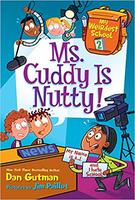
Ms. Cuddy Is Nutty!
When the students of Ella Mentry School receive a million-dollar donation and vote to create an in-school, state-of-the-art TV station so the morning announcements can be broadcast to all the classes, A.J. and the gang wonder about the agenda of their new teacher, Ms. Cuddy, who decides the announcement ratings are too low and has some quirky ideas about how to increase the station's popularity.
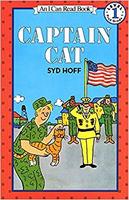
Captain Cat
A cat makes friends with a soldier and learns about military life when he joins the army.

Great Migrations Whales
Based on the highly-acclaimed National Geographic Channel special, these high-interest readers blend amazing images with incredible stories of the perilous journeys some animals must take in order to survive, inviting readers to follow the fascinating migration paths of some of nature's most driven creatures, including butterflies, whales, elephants, zebras and others. Level 3 readers are perfect for kids who are reading on their own and are ready for a more challenging vocabulary and richer text.
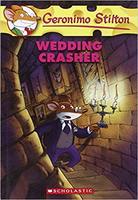
Wedding Crasher
When Geronimo gets an invitation to his cousin's wedding at Cheap Change Hill, Thea, Trap, and Benjamin convince him to attend.
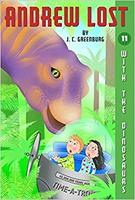
Andrew Lost with the Dinosaurs
Andrew, Judy, and Thudd have escaped primordial Earth only to find themselves surrounded by hugeand hungry!dinosaurs. Meanwhile Uncle Al is still stranded in the Ice Age. Somehow Andrew, Judy, and Thudd must fix their time machine and rescue Uncle Albefore he becomes a human ice cube! Kids, parents, and teachers love this serieskids for all its gooey grossness, and teachers and parents for all the fun science and great discussion points!
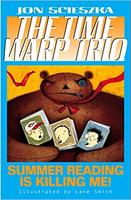
Summer Reading is Killing Me!
At the beginning of summer vacation Joe, Sam, and Fred find themselves trapped inside their summer reading list, involved in a battle between good and evil characters from well-known children's books.
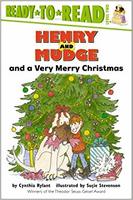
Henry and Mudge and a very Merry Christmas
Christmas at Henry's house is full of fun and presents, but Henry learns that his best present is one he already had--his dog Mudge.
